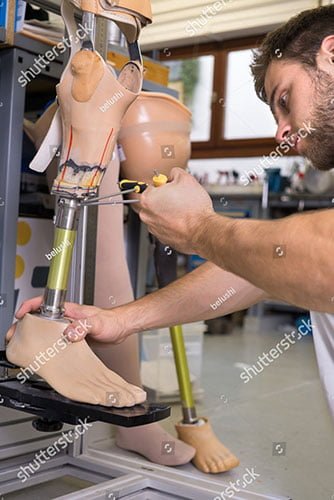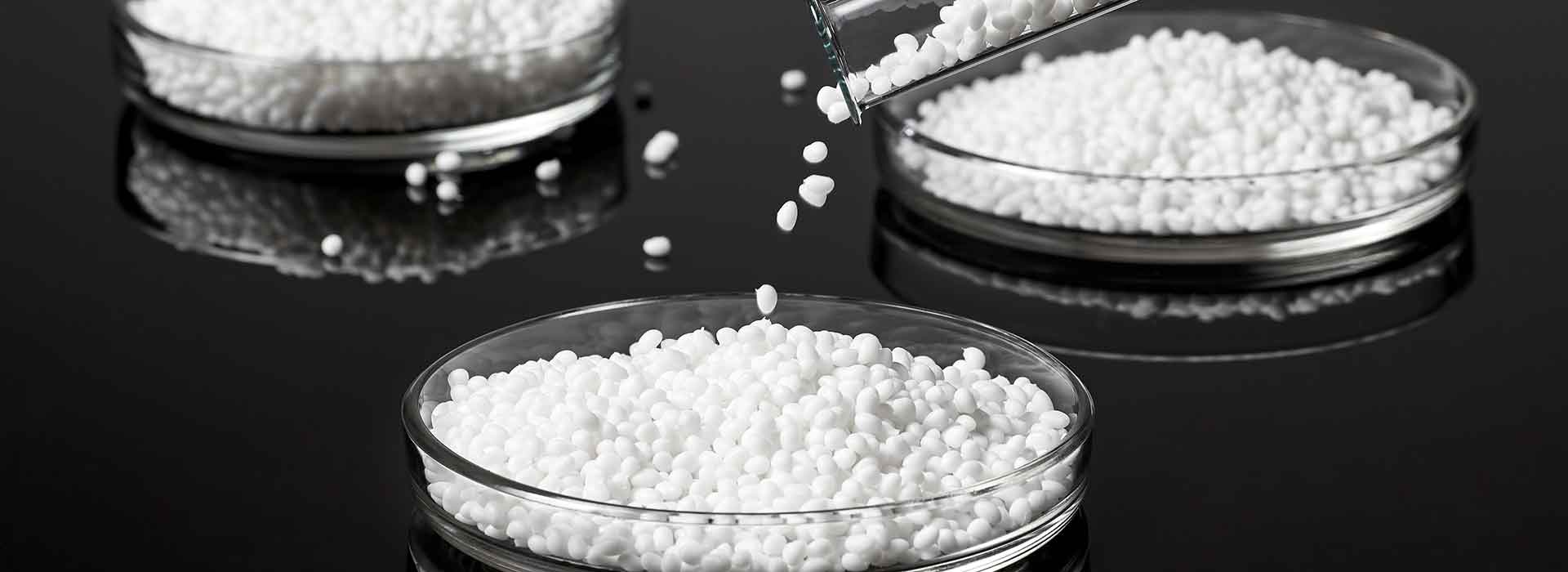PEEK’s future in orthopedic prosthesis procedures is an intriguing one. The high-performance polymer has been successfully adapted for knee and shoulder arthroplasty and arthroscopic treatments, and it will likely be a top biomaterial for additional purposes before long. That’s because PEEK is a compelling alternative to titanium, ceramic and resorbable materials like PLA, offering superior material properties and an unmatched safety record for in vivo procedures.
What procedures will a PEEK orthopedic prosthesis help with?
PEEK’s biocompatibility and bioinertness are well established. More than 9 million PEEK implants across a range of applications have been safely implanted in thousands of patients, so it has excellent on-going potential as an orthopedic prosthesis component. Further driving this point is PEEK’s material properties, which offer a similar modulus to bone, radiolucency and superb fatigue resistance. In short, there are plenty of reasons why PEEK is a research focus for orthopedic procedures.
What procedures are PEEK components are a good fit for?
1. Knee arthroplasty – During knee arthroplasty, damaged parts of the knee are removed and replaced with a manufactured component. The new components include a femoral stem and an acetabular cup, which must withstand reaction forces several times the weight of the patient. The replacement joint material, then, must be stable under heavy loading. One material that meets this standard is Carbon Fiber Reinforced, or CFR, PEEK. Modifying PEEK with chopped carbon stiffens the polymer and allows it to accommodate additional weight.
CFR PEEK is an intriguing option for knee placement applications, because it offers superior cold flow and wear resistance, which means it will maintain its stability and weight-bearing capabilities for longer than other biomaterials.
PEEK, in all of its forms, also comes with unmatched design and processing versatility, so it can be precisely shaped for a better fit. This can improve patient comfort and flexibility.
2. Knee arthroscopy – Knee arthroscopy usually involves minor surgery and can be done as an outpatient procedure, in some cases. During the procedure, the doctor will assess the joint’s condition and determine what can be done to treat any issues. Fortunately, arthroscopic surgery is far more sophisticated than in decades past, and many conditions can be resolved with this procedure alone. For example, arthroscopic surgery can be used to correct most meniscus tears.
During surgery, the doctor will usually need to anchor tissues with sheath and screw systems. This keeps the tissues in place for proper healing, so the sheath and screws must demonstrate excellent strength. This is an area that PEEK excels in, and it demonstrates impressive pullout strength, so the screws will remain in place. Further, PEEK is radiolucent, so any fixation components will not be visible on X-ray, CT and MRI scans. PEEK’s radiolucency allows medical practitioners to monitor and assess the surgery’s results.
3. Hip arthroplasty – Hip arthroplasty is indicted in many older patients, as it can be used to treat several forms of arthritis, including osteoarthritis. As the world’s population ages, hip arthroplasty will likely become a frequently seen procedure.
Total hip arthroplasty involves the replacement of the damaged femoral head and acetabulum, allowing for a tight, smooth connection between ball and socket. The artificial acetabular cup takes on much of the weight-bearing responsibilities and is usually the component that experiences the most wear. As such, the acetabular cup must offer excellent wear and fatigue resistance to prevent complications like dislocation.
CFR PEEK is a frontline material choice for acetabular cups for many of the same reasons that it works in knee arthroplasty. CFR PEEK can bear a great deal of weight, is highly wear resistant and is completely biocompatible, so it can be placed safely. Several studies have been published on CFR PEEK’s viability and safety as an acetabular cup, and their results have been overwhelmingly positive in PEEK’s favor. A 2008 study published in the Journal of Engineering in Medicine looked at Invibio’s CFR PEEK acetabular cup, and it found the cup only sustained 1mm3 of wear after 1 million cycles of femoral head articulation. Another study, this one published in 2009 in the same journal, found that CFR PEEK sustained minimal wear when used against metal and ceramic surfaces.
4. Shoulder arthroscopy – Suture anchors are a standard implement in shoulder arthroscopy and are most often seen in rotator cuff and shoulder labrum repairs. Shoulder arthroscopy remains a challenging procedure for surgeons to execute, as many patient reports have found that existing anchor materials may degrade too soon. Anchor degradation is essential for promoting bioabsorption, but if the material degrades too quickly, additional surgeries may be required to address the issue.
This is a concern that PEEK is uniquely well-suited to solve. PEEK provides elite load-to-failure strength and its noted radiolucency, and when combined with certain phosphates, it can be set to degrade over years. This provides ample time for the suture to heal and to promote osteoconductivity so that there are no complications once the anchor is absorbed.
PEEK’s potential as an orthopedic prosthesis has already been put into use. Tens of thousands of patients are walking around with hips and knees made from the high-performance polymer, and the results are extremely impressive. With superior biocompatibility, strength and wear resistance, a PEEK orthopedic prosthesis is the clear choice for many replacement procedures.


